
Image - Wikimedia / Peter A. Mansfeld
Sansevieria are plants that can be had both indoors and outdoors. Their light needs are quite low compared to those of other species, so we will have no problem finding the most suitable place for them to grow.
But Have you ever wondered what types of Sansevieria there are? The genus is made up of about 130 species, although only a few are cultivated. Let's see what they are.
Before starting…
… It is important to clarify something. The plants that we know as Sansevieria and that in fact belonged to that botanical genus, in 2017 were included within Dracaena. This is because after performing a series of molecular studies From their phylogeny, researchers have discovered that they have characteristics in common. Therefore, it is no longer entirely correct to say Sansevieria, since they are Dracaena.
Anyway, to facilitate the reading and identification of the plants we are going to write the article using both names.
Types of Sansevieria
Sansevierias are plants that grow in Africa and Asia. They receive several common names, such as mother-in-law's tongue, sword of Saint George, or plant of the serpent. The most widely cultivated species are the following:
Sansevieria bacularis o Dracaena bacularis
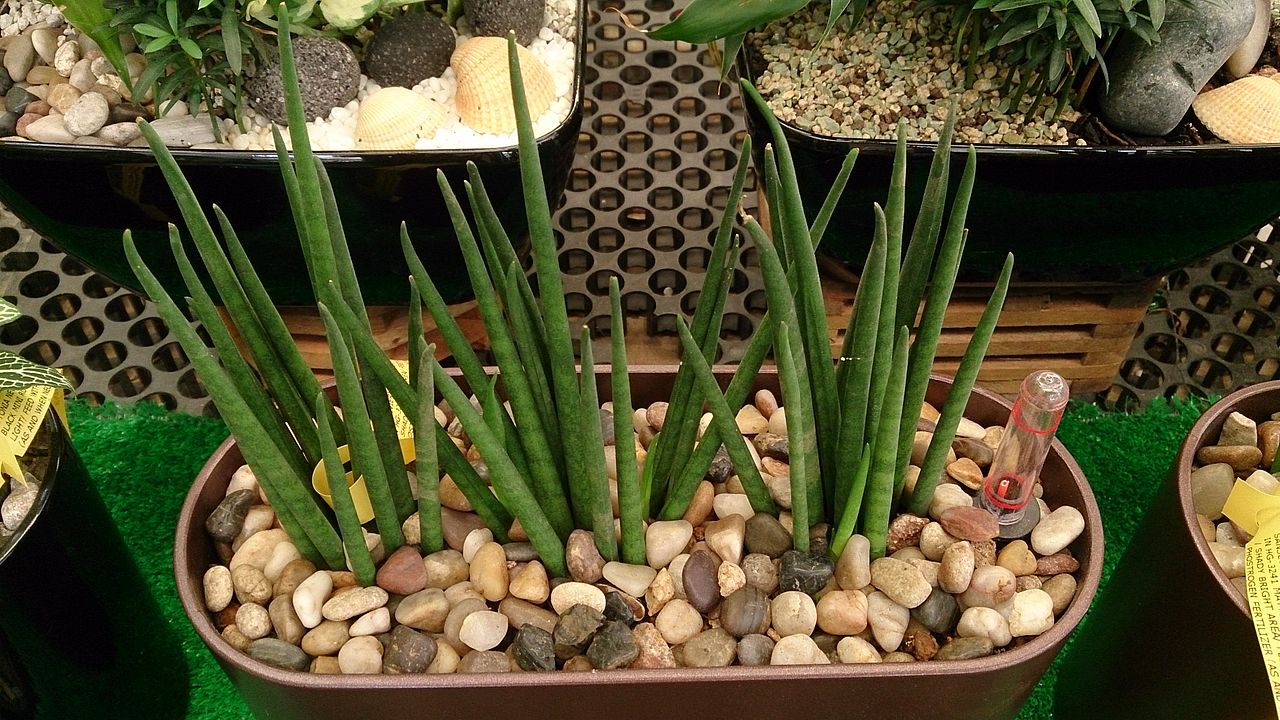
Image - Wikimedia / Mokkie
La Sansevieria bacularis, sometimes called mikado, is a plant that grows in southern Africa, Madagascar, and in southern Asia that has cylindrical leaves 1 to 3 centimeters thick and up to 1 meter high. These are dark green with stripes of a lighter greenish hue.
Its flowers are white and are grouped in cluster-shaped inflorescences. They are about a meter long, usually shorter than leaves.
Sansevieria cylindrica o Dracaena cylindrical
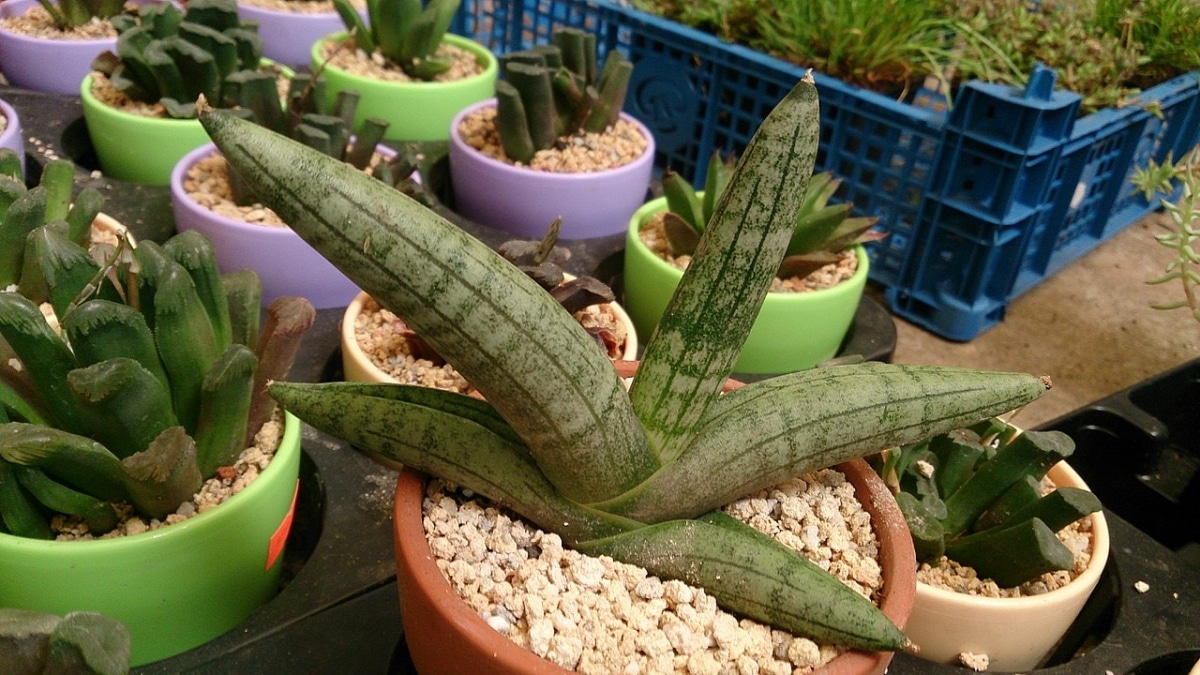
Image - Wikimedia / Mokkie
La Sansevieria cylindrica it is a plant native to tropical Africa. It has between 3 and 4 cylindrical leaves of about 3 centimeters in diameter and up to 2 meters long, and are dark green with the margins of a lighter greenish color.
Its flower cluster is up to 1 meter long, but almost always less than the leaves. These flowers are white but have pink hues. As for the fruit, it measures 8 millimeters in diameter.
Sansevieria pinguicula o Dracaena pinguicula

Image - Wikimedia / Krzysztof Ziarnek, Kenraiz
La Sansevieria pinguicula is an endemic plant of Kenya (Africa) that grows only up to 30 inches tall. It has a total of 5 to 7 fleshy green leaves with a size of 12 to 30 centimeters long and up to 4 centimeters wide.
Its flowers are grouped forming a branched panicle which sprouts from the center of the rosette of leaves. The fruit is a globe-shaped berry.
Sansevieria trifasciata o Dracaena trifasciata
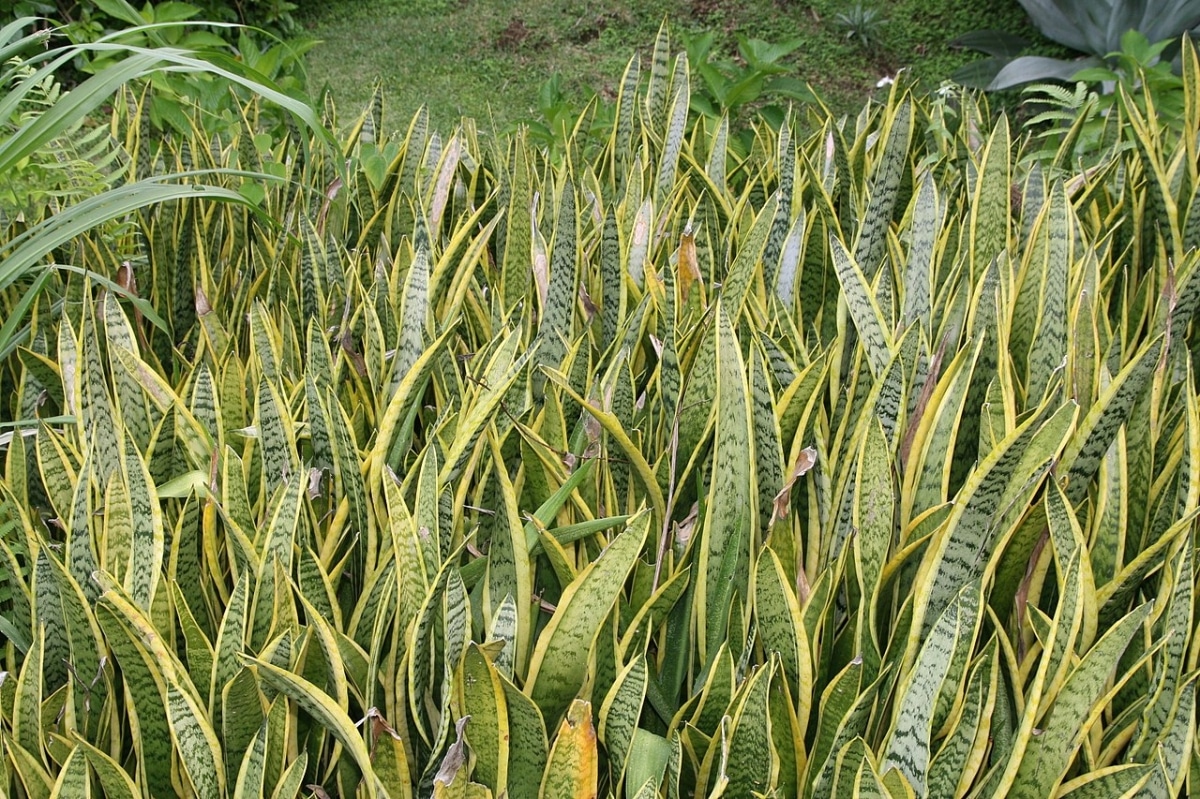
Image - Wikimedia / David J. Stang
La Sansevieria trifasciata it is the most common of all. It is native to tropical Africa and develops lanceolate leaves, and almost vertical green, or variegated (green with yellowish margins). These They can measure 140 centimeters long by 10 centimeters wide.
Its flowers are grouped in clusters of about 80 centimeters long, and are whitish-greenish in color. When they are pollinated, the fruit begins to ripen, which is an orange berry. There are two varieties:
Sansevieria trisfaciata var Hahnii
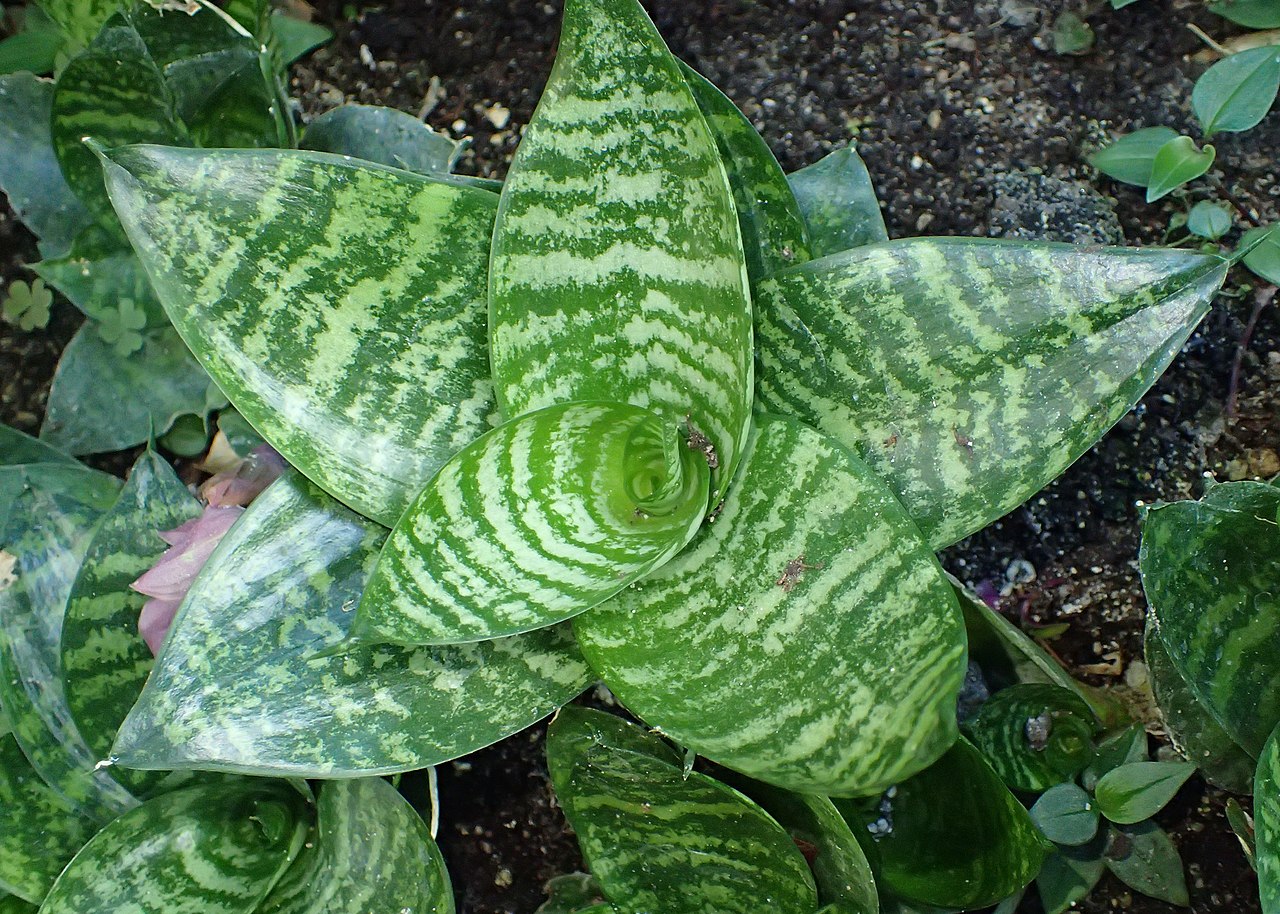
Image - Wikimedia / Krzysztof Ziarnek, Kenraiz
It is a small variety, with a height not exceeding 40 centimeters. It has wide, short leaves with an approximate length of 20 centimeters, and of green and yellow-greenish color.
Sansevieria trifasciata var Laurentii
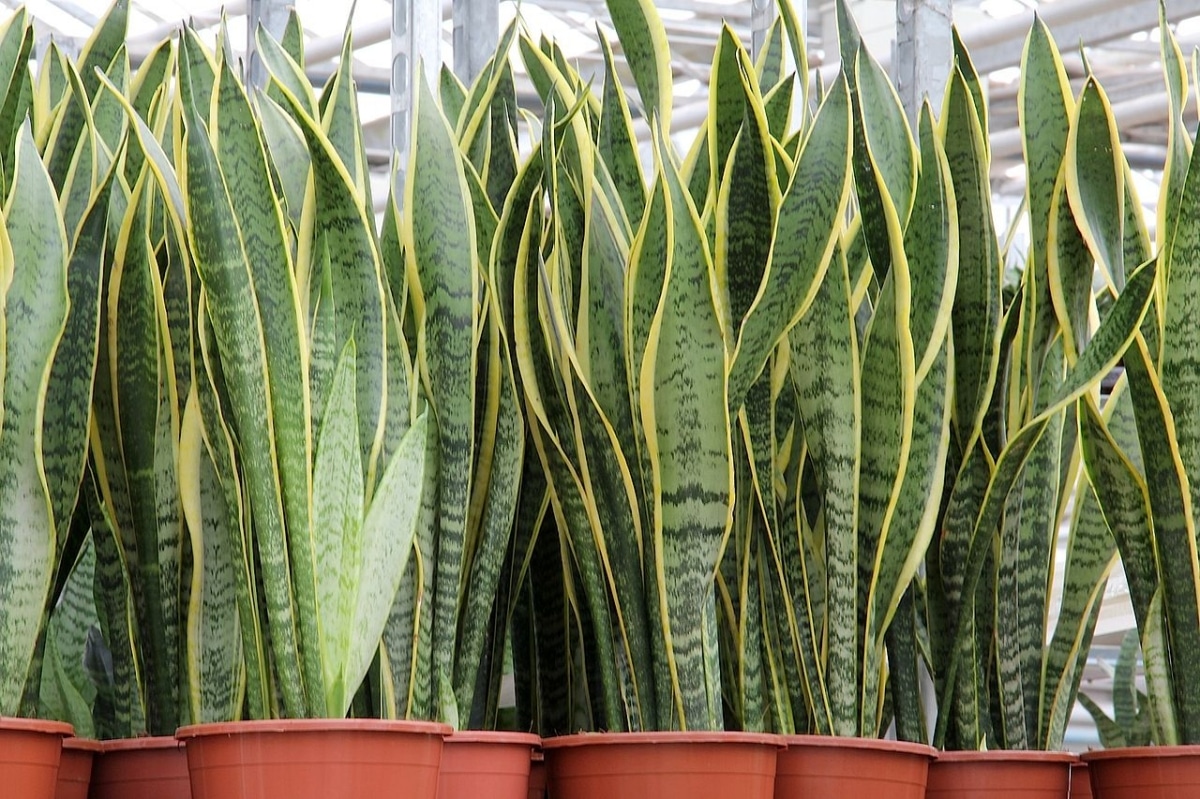
Image - Wikimedia / Peter A. Mansfeld
Unlike the type species, this it is one that has long leaves, up to 100-140 centimeters long, green in color but with a yellow border.
Sansevieria zeylanica o Dracaena zeylanica

Image - Wikimedia / Yercaud-elango
La Sansevieria zeylanica is a plant native to Africa and Asia that develops between 8 and 15 leaves with a size of 30 centimeters long by 5-10 centimeters wide. They are light green with darker green stripes.
They produce clusters with numerous white flowers, which emerge from the center of the rosette of leaves.
How to decorate with Sansevieria plants?
We have seen the main species and varieties, but now is the time to find out where to place them. To do this, it is necessary to know that, yes, they tolerate the shade, but if you prefer to have it indoors it is more recommended that they be placed in a room where there is a lot of light.
In addition, should be kept away from the air conditioner, fans as well as hallways. It is also important that they are a little separated from the wall or wall, since otherwise the friction would damage the leaves.
As they are tropical plants, they do not resist much frost, so If the winters are cold in your area, it is best to go inside when the temperatures begin to drop of the 10ºC, or that you cultivate them inside the house all the year.
Ideas to decorate with Sansevieria
Here are some:
In the garden
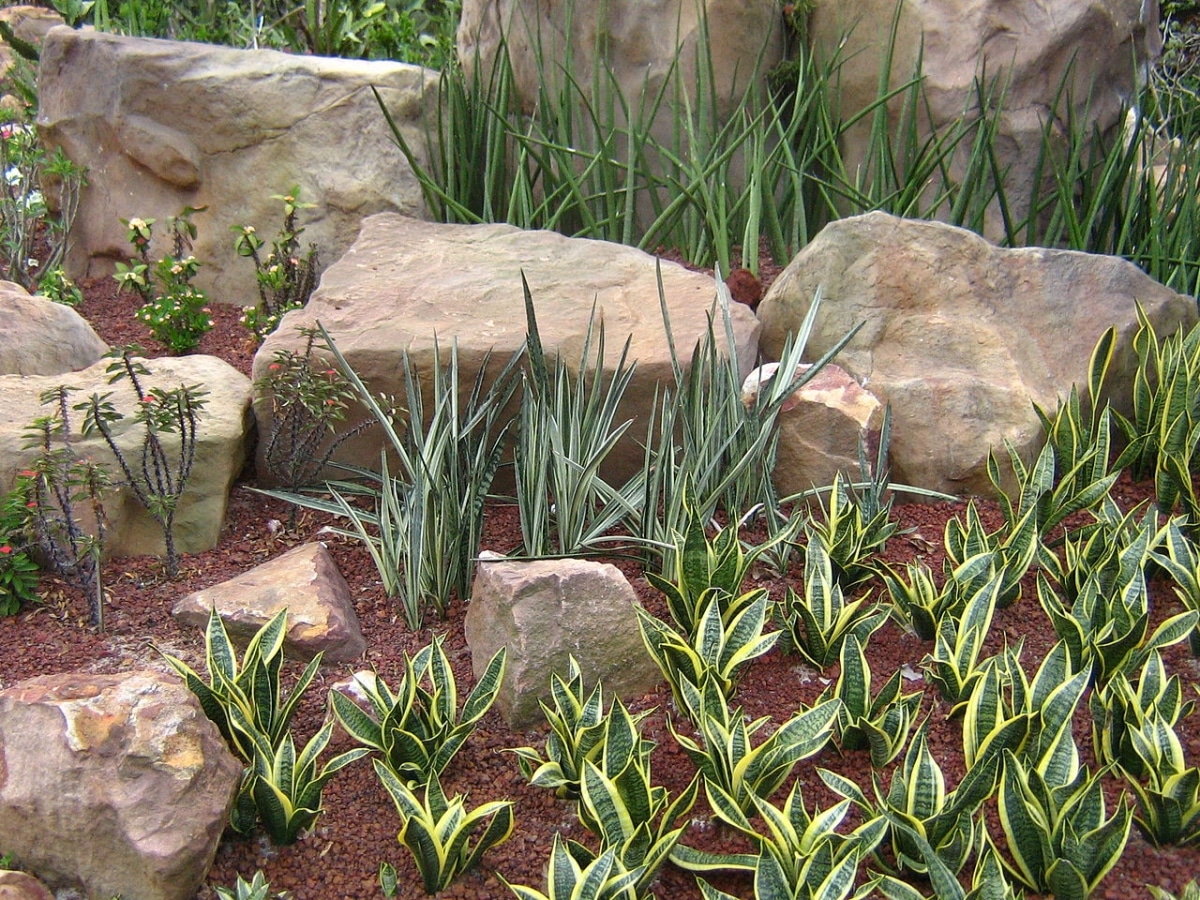
Image - Wikimedia / Calvin teo
If you live in an area where there is no frost, certainly growing sansevieria in the garden will be a very good idea. Plant many in the same corner, at a distance of eight or thirty centimeters between them and you will achieve a magnificent effect.
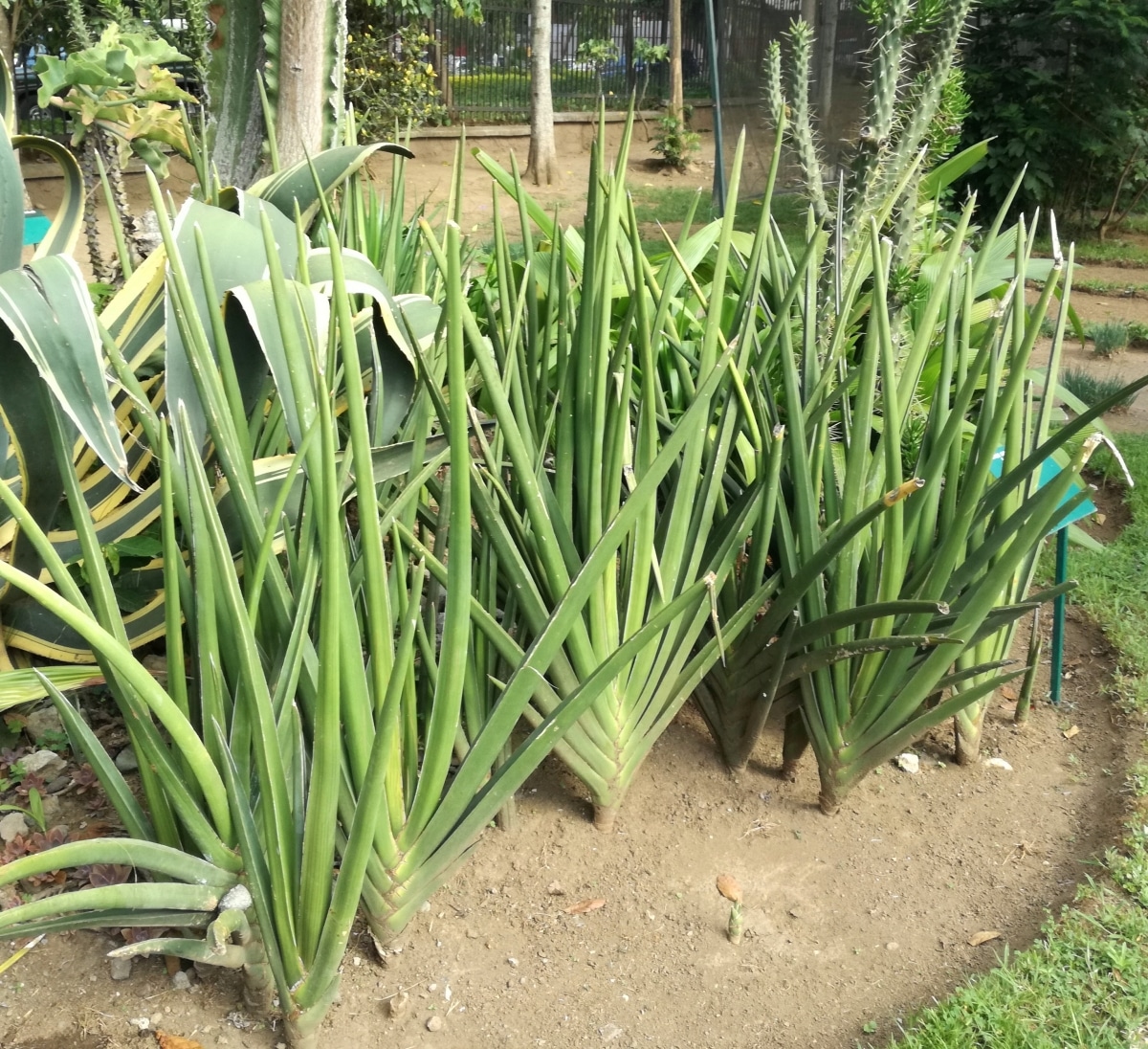
Image - Wikimedia / Abu Shawka
If they are plants acclimated to the sun, they will look great if planted with other succulent plants, be they cactus or succulents. They want little water, so they will be fine with them.
At home
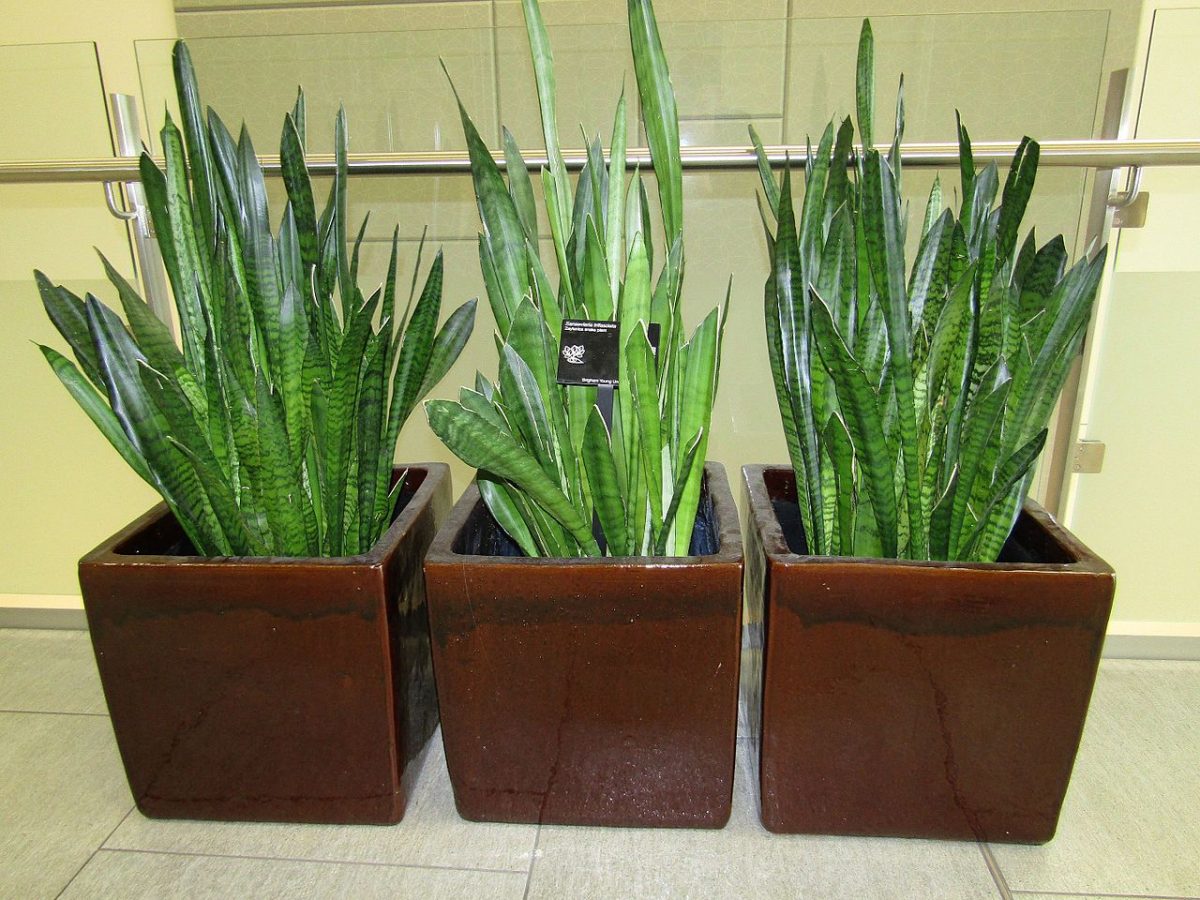
Image - Wikimedia / Ben PL
Growing sansevieria at home is an excellent alternative when living in an area where winters are cold. AND, What better way to do it than by putting them in decorative pots, for example in the living room? Of course, choose containers that have holes in the base, and remember to drain the plate that you put underneath after each watering. This way the roots will not rot.

Image - NOTH GARDEN
Y, What do you think of putting other plants around it? In an office or office for example, or in an interior patio it can be very beautiful. Dare to try it.
What do you think of the different types of Sansevieria that we have recommended?